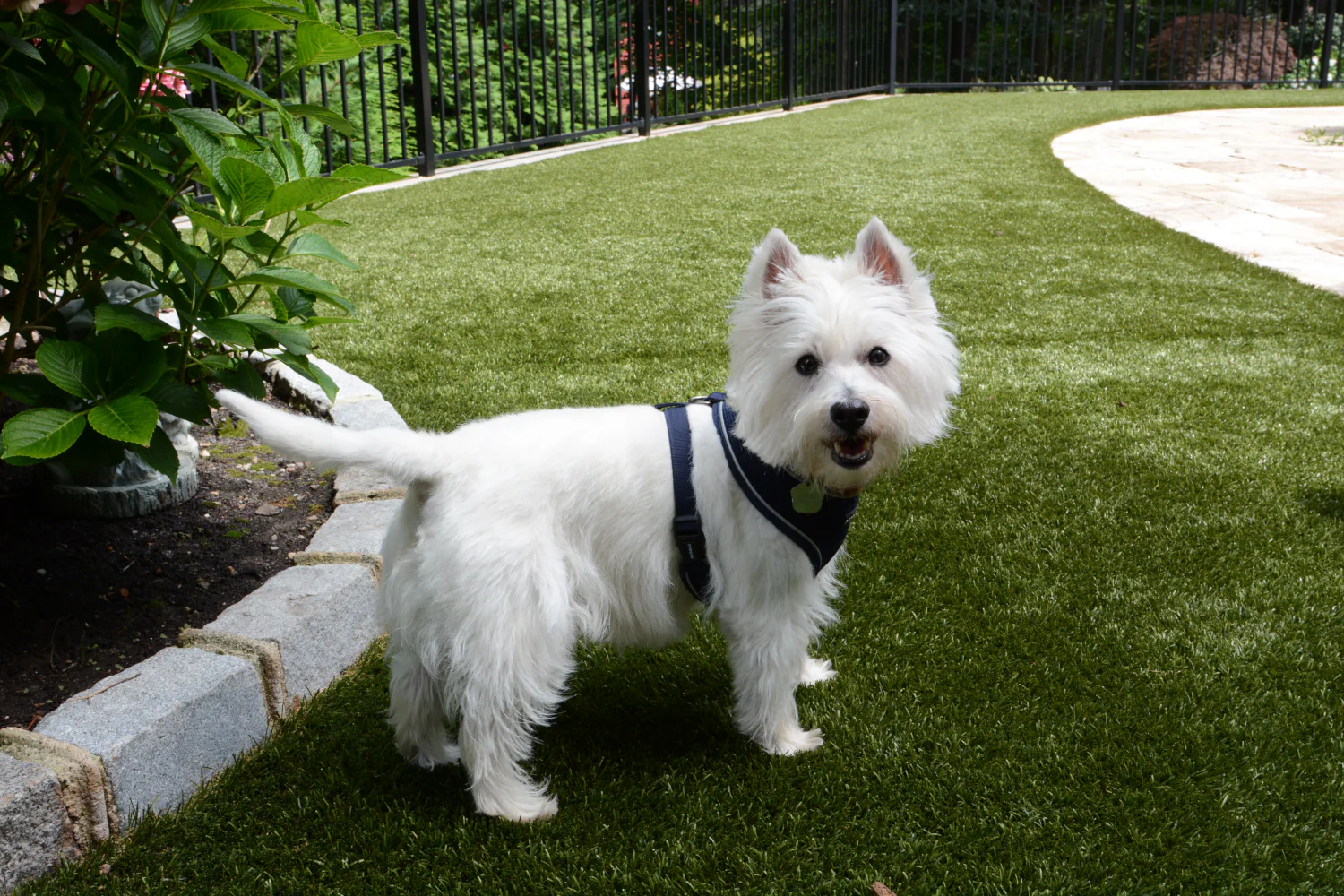How to Avoid Pet Turf Mistakes

You installed artificial grass for the low upkeep and clean look — smart move. But pets bring new challenges. Here’s a straightforward breakdown of the most common problems that happen to fake grass for dogs and exactly what to do about each of them, in simple steps.
1. NOT PICKING UP DOG POOP
What happens: A dog poop left behind hardens, smears, or soaks into the infill.
Why it matters: Old waste can collect harmful microbes and discolor the turf.
Fast fix: Pick up and dispose as soon as you can. If a mess stays, use a soft brush and a spray with water to lift it out.
Habit to build: Keep a small scoop and covered container near the yard for quick cleanups.
2. URINE BUILD-UP
What happens: Dogs favor a few spots and urine builds up.
Why it matters: Lingering stink and yellowed infill may follow.
Fast fix: Spray the area with water from time-to-time to prevent buildup, especially if weather is dry. For stubborn smells, a pet enzyme cleaner made for artificial turf might be needed when using regular sand infill. Using specialized SWG/Shaw K9 infill stops odor completely.
Preventive move: Change where your dog plays or use distractions to spread traffic around.
3. DIGGING, CHEWING, AND NAIL DAMAGE
What happens: Dogs paw at the ground, gnaw turf, or their nails catch seams.
Why it matters: Tears, loose edges, and pulled fibers shorten the turf’s life and become a tripping hazard.
Fix: Trim nails regularly and pin down loose areas with landscaping stakes or approved bonding adhesive.
Prevention: Give dogs a dedicated digging area and provide chew toys.
4. WATER DRAINAGE PROBLEMS
What happens: Water gathers after storms or heavy use.
Why it matters: Standing water areas promote mold and feel unpleasant for pets.
Fast fix: Clear debris from water drains. Check seams near drains to check for blockages.
When to call a pro: If the same spot puddles after many rains, the ground may require adjustment.
5. FLATTENED TURF FIBERS
What happens: Frequently used areas start to look worn and crushed.
Why it matters: Impacted infill locks in dirt and reduces softness.
Fast fix: Brush against the grain with a soft-bristle broom.
Routine: Brush busy play spots once a month to keep the turf upright.
6. USING THE WRONG CLEANING PRODUCTS
What happens: Harsh chemicals weaken the backing and fibers.
Why it matters: Discoloration, weakened seams, and reduced turf life.
Fast fix: Flush with water thoroughly and use pet-safe gentler turf cleaners. A vinegar-water mix works for many scent troubles.
Note: Avoid toxic cleaners and wire bristles.
QUICK CARE CHECKLIST
- Scoop solids within a few hours
- Flush urine spots at least once a week
- Brush high-use turf areas monthly
- Give chews on a mat
- Use enzyme cleaners labeled safe for synthetic turf
- Check drainage after heavy storms
NEED A DEEP PROFESSIONAL CLEANING
Simple routines keep your artificial turf for dogs smelling fresh and appearing well-kept. If you need help — from a deep clean to fixing drainage issues or refreshing infill — Southwest Greens can step in and handle the heavy lifting so your yard remains pet-friendly and guest-ready. Reach out, and we’ll recommend solutions for your lawn.
